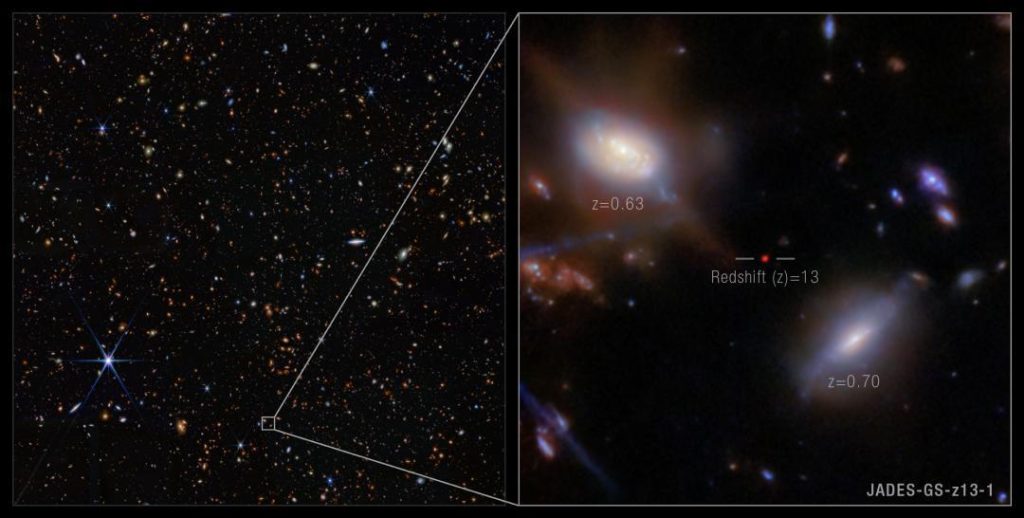
NASA’s Webb Discovers Galaxy Observed 330 Million Years After Big Bang
One of the most significant discoveries in the history of space exploration has been made by NASA’s James Webb Space Telescope. The telescope has successfully observed a galaxy, known as JADES-GS-z13-1, 330 million years after the Big Bang. This remarkable finding has left scientists stunned and has raised several questions about the early universe.
The discovery of JADES-GS-z13-1 is significant because it provides a glimpse into the early universe, which is still shrouded in mystery. The galaxy is observed at a time when the universe was just 300 million years old, which is extremely early in its history. During this period, the universe was still in its formative stages, and galaxies were just beginning to take shape.
What makes this discovery even more remarkable is the fact that JADES-GS-z13-1 displayed strong Lyman-alpha emission. Lyman-alpha emission is a type of radiation that is produced when neutral hydrogen gas is ionized by the ultraviolet light from stars. However, in the early universe, this type of radiation is not expected to be present. This is because the universe was still ionized, and stars had not yet formed.
The source of Lyman-alpha radiation from JADES-GS-z13-1 is not yet known, but it may include the first light from the earliest generation of stars to form in the universe. These stars are thought to have formed around 100 million years after the Big Bang, but the exact timing and location of their formation are still unknown.
The discovery of JADES-GS-z13-1 has challenged current theories of early galaxy formation and reionization. According to these theories, the universe was ionized through the radiation from stars, which in turn caused the gas to become ionized. However, the presence of Lyman-alpha emission in JADES-GS-z13-1 suggests that there may have been other sources of ionization, such as the first stars or other forms of radiation.
The finding also raises questions about the role of dark matter in the early universe. Dark matter is a type of matter that does not interact with light, making it invisible to our telescopes. However, scientists believe that it plays a crucial role in the formation of galaxies.
The discovery of JADES-GS-z13-1 is a testament to the power of NASA’s James Webb Space Telescope. The telescope is designed to study the early universe, and its ability to observe galaxies at such great distances has provided scientists with a new window into the past.
The findings of this study have been published in a paper titled “A Lyman-alpha emitters at z=13.4: implications for the early universe” by a team of scientists led by Dr. Pascal Oesch of Yale University. The paper provides a detailed analysis of the galaxy and its properties, and it has sparked a lot of interest in the scientific community.
In conclusion, the discovery of JADES-GS-z13-1 is a significant milestone in the study of the early universe. The galaxy’s strong Lyman-alpha emission has challenged current theories of early galaxy formation and reionization, and it has raised questions about the role of dark matter in the early universe. The findings of this study have significant implications for our understanding of the universe, and they provide a new area of research for scientists to explore.
Source:






